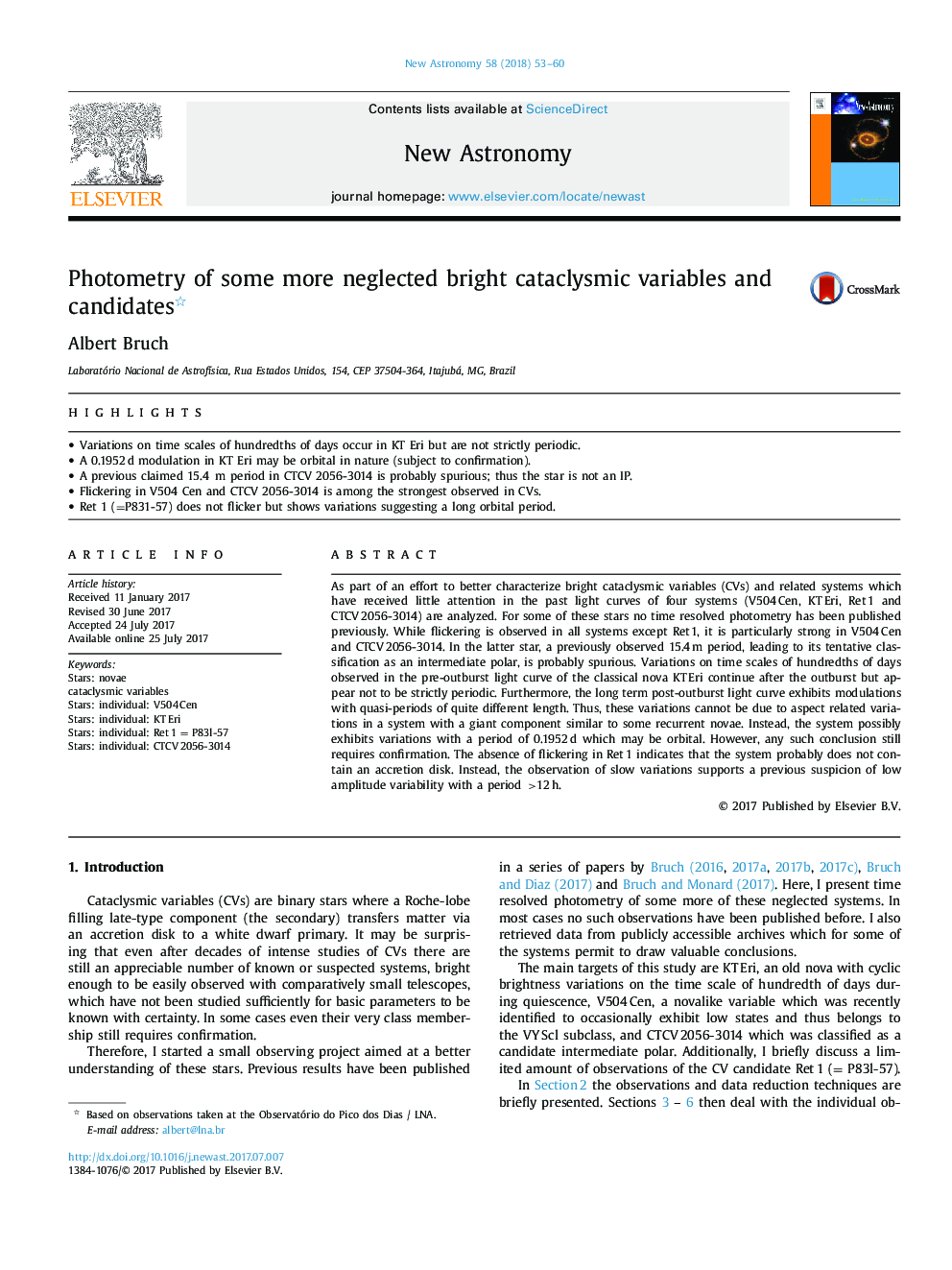| Article ID | Journal | Published Year | Pages | File Type |
|---|---|---|---|---|
| 5487754 | New Astronomy | 2018 | 8 Pages |
Abstract
As part of an effort to better characterize bright cataclysmic variables (CVs) and related systems which have received little attention in the past light curves of four systems (V504â¯Cen, KTâ¯Eri, Retâ¯1 and CTCVâ¯2056-3014) are analyzed. For some of these stars no time resolved photometry has been published previously. While flickering is observed in all systems except Retâ¯1, it is particularly strong in V504â¯Cen and CTCVâ¯2056-3014. In the latter star, a previously observed 15.4â¯m period, leading to its tentative classification as an intermediate polar, is probably spurious. Variations on time scales of hundredths of days observed in the pre-outburst light curve of the classical nova KTâ¯Eri continue after the outburst but appear not to be strictly periodic. Furthermore, the long term post-outburst light curve exhibits modulations with quasi-periods of quite different length. Thus, these variations cannot be due to aspect related variations in a system with a giant component similar to some recurrent novae. Instead, the system possibly exhibits variations with a period of 0.1952â¯d which may be orbital. However, any such conclusion still requires confirmation. The absence of flickering in Retâ¯1 indicates that the system probably does not contain an accretion disk. Instead, the observation of slow variations supports a previous suspicion of low amplitude variability with a period â¯>12â¯h.
Keywords
Related Topics
Physical Sciences and Engineering
Physics and Astronomy
Astronomy and Astrophysics
Authors
Albert Bruch,
